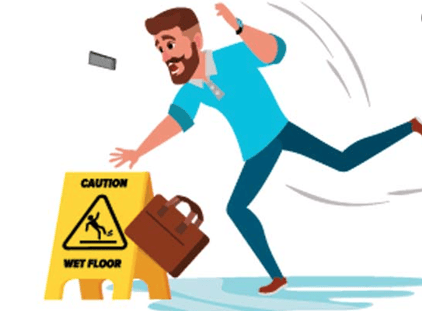GENERAL RULES
There is no definitive method of how to clean hard flooring in commercial buildings and offices other than each cleaning method should be practicable, fit for purpose for the particular flooring and take into account the frequency the floor requires cleaning.
Most commercial hard floor cleaning should be undertaken on a daily basis. The cleaning schedule should contain dust removal and a light damp clean. This basic level of service will help to maintain a positive appearance for the floor as well as removing any surface dirt.
If your hard floor is looking very poor or dirty, the chances are you will need to adjust either the frequency of cleaning or the method of cleaning. It may be that the product being used is unsuitable for the level of soiling or the type of flooring.
Some products will be very effective for some hard floors and produce excellent results, however they may prove unsuitable or even detrimental for other types. A good approach would be to research using the floor specification that will suggest the correct cleaning regime. If no details are available, then look at the surface and the result required and research product specifications and test them on a small area first, and review the results.
FOR EXAMPLE
A product that would work well on a polished vinyl floor that may contain some form of polish enhancer would ultimately leave a naturally polished stone or porcelain floor smeary.
Common issues that cause an accumulation of soiling upon the floor surface are:
Inadequate entrance matting - most dirt and dust are transferred in from the outside pavement on shoes or delivery trolleys. A good entrance matt will trap and prevent a lot of the soiling from transferring onto the hard floor.
Inadequate cleaning frequency - prevention is always better than cure, so ensure the dust or soiling is removed daily to an agreed schedule.
Poor method of cleaning - including improper use of chemicals. Failing to refresh the cleaning solution/water frequently will result in dirt being spread around rather than lifted off the flooring.
SAFETY FLOORING
Safety flooring in particular can prove difficult to keep clean without the right equipment. As the level of Health and Safety has become a priority in many buildings, flooring manufacturers have produced non-slip flooring to minimise the potential risks associated with slips and falls in the workplace. (Slips, trips and falls contribute to a large number of workplace accidents and safety flooring helps to prevent this issue. In 2019 24,790 recorded incidents of slips trips and falls in the workplace)

The problem associated with safety flooring is often how to keep its appearance clean and fresh. In a very short period of time, even with a daily floor cleaning schedule, the flooring will start to accumulate soiling and appear dull and dirty.
Most manufactures of safety flooring recommend regular periodic or safety floor deep cleaning to ensure the flooring looks good and retains the level of performance that it was installed for.
There are many types of flooring laid in commercial buildings and each is usually laid for a purpose that suits the intended use of the premises. Over time the use of the premises can change and it would not necessarily be practical or cost effective to take up and relay the floor each time this happens.
The best approach is to find out what type of flooring is in the building and the best method to clean it. Commercial hard flooring can often be restored by a deep cleaning or full restoration process.
4 STEPS TO REMEMBER IN FLOOR MAINTENANCE
There are four major steps in the maintenance process:
- Stripping
- Scrubbing and Cleaning
- Buffing and Polishing
- Burnishing
Understanding each step and the specific floor pads involved is crucial to achieving the best appearance and extending the life of the floor.
5 STEPS TO PROPERLY MOP A FLOOR
- Sweep the floor first. If you don't, you'll just be pushing dirt around
- Choose the right mop. This is probably the most important step
- Have a good system. Depending on what cleaner and mop you're using, try to create an easily repeatable system and change the water regular
- Always follow dilution instructions on cleaning chemicals
- Let it air dry
If you would like more information on hard floor cleaning and maintenance, please contact Ryan Stillwell for a free consultation on 01702 713100.
